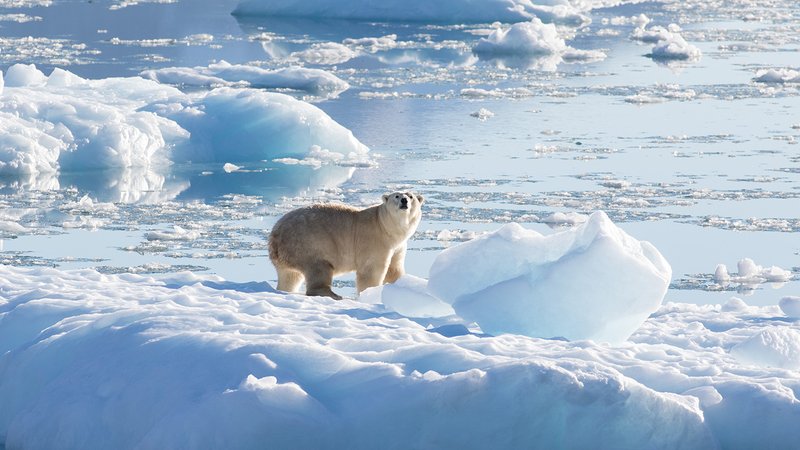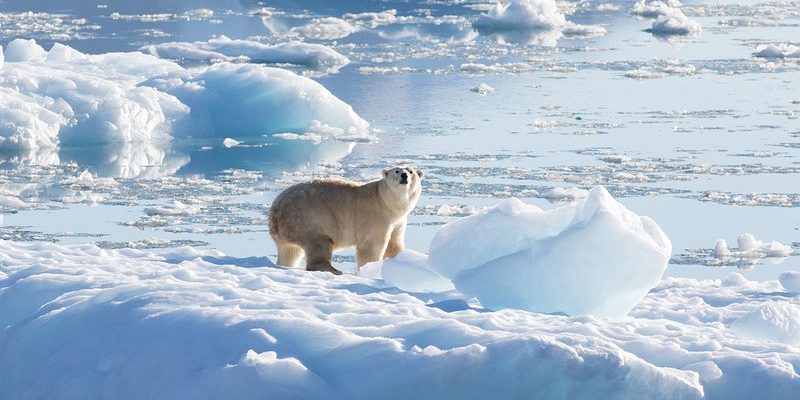
Imagine living in a place where temperatures can drop to minus 40 degrees Fahrenheit. You’d need more than just a warm coat to get by! Polar bears have evolved a whole suite of features that help them not just survive, but flourish in harsh environments. From their thick fur coats to their impressive fat layers, there’s so much more to these bears than meets the eye.
Thick Fur and Layered Fat: Nature’s Warmth
Polar bears are often called “ice bears,” and for good reason. Their bodies are finely tuned to keep them warm in frigid temperatures. The first thing you’ll notice about a polar bear is its thick, white fur. This isn’t just for show! The fur consists of two layers: a dense undercoat that traps heat and long guard hairs that repel water and provide insulation. This double-layer system works much like a high-tech winter jacket: it keeps them warm while allowing them to swim in icy waters without losing body heat.
You might be surprised to learn that polar bears can lose heat quite rapidly, especially when they’re wet. That’s why their fur is so vital. The guard hairs are hollow, which helps to trap air and add extra insulation. In fact, this special fur can keep them warm even in temperatures below zero, allowing them to venture out for long periods without the risk of getting too cold.
But wait, there’s more! Beyond their fur, polar bears also have a thick layer of fat, known as blubber, that can be up to 4 inches thick. This fat is critical for survival in the wild. It not only keeps them warm but also acts as an energy reserve during times when food is scarce. Think of blubber as an internal battery pack, providing energy when they need it most. So, when you see a polar bear lounging on an ice floe, it’s not just resting—it’s conserving energy and ensuring it can thrive despite harsh conditions.
Superb Swimmers and Expert Hunters
Polar bears are more than just furry giants; they’re also incredibly skilled swimmers. Their large, powerful limbs and webbed feet help them paddle through icy waters with ease. In fact, they can swim for miles in search of food or to cross open water between ice floes. Imagine you’re taking a dip in a chilly pool, but these bears dive effortlessly into freezing seas!
This swimming ability is crucial for their survival. Since they primarily hunt seals, which are often found on sea ice, polar bears need to be able to travel long distances to find their next meal. They can hold their breath underwater for up to two minutes, allowing them to sneak up on unsuspecting seals lounging on the ice. When they do spot a meal, their hunting technique involves a stealthy approach, using the ice as cover.
During summer months, when ice melts and food becomes harder to find, their swimming skills become even more important. As ice retreats, these bears often have to venture further from land to find suitable hunting grounds. This adaptability showcases their incredible survival instincts. They are, without a doubt, masters of their icy realm.
Camouflage and Stealth: Blending In
In the vast, snowy landscape of the Arctic, it’s essential for a polar bear to remain unseen, especially when hunting. Their fur isn’t just thick; it’s also white, allowing them to blend seamlessly with their surroundings. This natural camouflage is a key element in their hunting strategy. Imagine playing hide and seek in a snow-covered playground—polar bears are the ultimate champions of stealth.
When they’re on the prowl, they often crouch low to the ground, using the terrain and any available ice features to conceal themselves. This means they can get quite close to their prey without being detected. It’s not just about strength; it’s also about being smart and using the environment to their advantage.
On bright, sunny days, their fur may appear a bit yellowish or even transparent! That’s because certain light conditions can affect how their fur reflects sunlight. While it may seem like a disadvantage, this clever adaptation helps them stay hidden from both prey and potential threats.
Diet and Energy Needs: The Hunt for Food
Polar bears are classified as carnivores, primarily feeding on seals. They rely on a high-fat diet to sustain their energy levels in such harsh conditions. Think of it this way: their bodies need a lot of energy to stay warm and keep moving, so they require food that’s rich in calories. A full-grown adult polar bear can consume up to 100 pounds of seal blubber in a single meal!
The hunting season typically peaks in spring, when seals are most abundant. To hunt effectively, they take advantage of seal breathing holes in the ice. They’ll patiently wait by these holes, using their keen sense of smell to detect any movement. When a seal surfaces for air, the bear swiftly strikes with impressive speed and strength.
During times when food is scarce, polar bears can enter a state known as “walking hibernation,” reducing their metabolic rate to conserve energy. During this period, they’re still awake and active, but they require less food. This remarkable feature allows them to survive when hunting opportunities are few and far between.
Social Behavior and Communication
While polar bears are often seen as solitary creatures, they do have social interactions, especially during breeding season or when food is plentiful. They communicate through a variety of vocalizations, such as growls, roars, and even chuffing sounds, which you might hear when they’re feeling friendly or excited.
You might wonder how polar bears manage to find each other in such vast, icy expanses. They rely on their keen sense of smell and sight. This allows them to track the scent of other bears and locate potential mates or family members.
When mothers give birth, they create dens out of snow to protect their cubs from the harsh elements. This nesting behavior is crucial for the survival of their young ones. Inside these dens, cubs are sheltered from the bitter cold until they’re strong enough to venture out into the world.
Adapting to Climate Change: Challenges Ahead
Unfortunately, the climate crisis poses a significant threat to the survival of polar bears. As global temperatures rise, the Arctic ice is melting at an alarming rate. This loss of ice means that polar bears have to travel farther and expend more energy to find food. Their hunting grounds are shrinking, making it increasingly difficult to find seals.
You might think that polar bears are resilient and can adapt to these changes. While they are indeed tough creatures, the pace of climate change may outstrip their ability to adapt. With less ice and fewer hunting opportunities, their populations could face serious challenges in the coming decades.
Conservation efforts are ongoing to protect these magnificent animals and their habitats. By addressing climate change and preserving the Arctic ecosystem, we can help ensure that polar bears continue to thrive in their harsh environments.
Polar bears are extraordinary animals with a unique set of adaptations that allow them to survive and thrive in one of the harshest environments on our planet. From their thick fur and fat layers to their impressive swimming skills and hunting strategies, these bears embody resilience. But with the impact of climate change looming over their future, it’s crucial that we work toward solutions that protect these incredible creatures and their icy homes.
Next time you think of polar bears, remember that they’re not just fluffy ice giants; they’re skilled survivors, navigating a world that’s both breathtaking and brutal. Let’s appreciate their strength and advocate for their preservation, so future generations can continue to marvel at these majestic animals.

